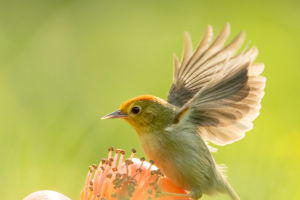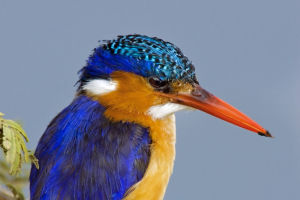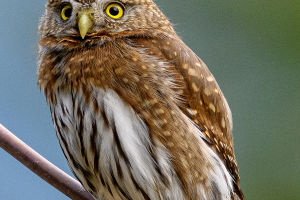In many people's minds, all flying birds fly forward. So, are there any birds that can fly backward? The answer is yes–it is the only bird in the world that can fly upside down, and it is also the smallest bird in the world: the hummingbird.
Hummingbirds live in a very wide range, from the Andes up to 4,000 meters to the tropical rainforest of the Amazon River. Some hummingbirds live in dry shrubs, and others in wet swamps.
Hummingbirds belong to the hummingbird family, which includes more than 300 different species of birds. The smallest species is the honey-sucking hummingbird, found in Cuba. Its adult body length is only about 5 cm, and it weighs about 1.8 grams.
Even the largest hummingbird, the giant hummingbird in South America, is only 20 centimeters long and weighs about 20 grams.
Although hummingbirds are omnivorous birds, more than 90% of their food is honey (the rest are insects), which is why they are called "hummingbirds."
Regarding the origin of hummingbirds, the fossils currently used as references are hummingbird fossils found in Europe, and they appeared on Earth about 30 million years ago.
However, due to the small size of hummingbirds, fossils are extremely difficult to preserve. Therefore, how hummingbirds became birds unique to the Americas is still unclear.
Hummingbirds may be small, but their eyes are large and focused. They are covered with gorgeous feathers, and some have long tails that flutter in the wind. Their mouth is thin and long, like a pipe, which can reach into flowers to suck nectar.
Hummingbirds are unique in many ways. Some of them are among the smallest birds in the world, they are the fastest flying birds in the world if measured by their body length, and they are the only birds that can truly hover.
Despite their small size, every hummingbird is a master of flight. They can flap their wings 20 to 200 times per second, and they can flap their wings horizontally. This movement creates a generally constant buoyancy force against the hummingbird's body.
At this time, it only needs to move its tail, and its body can move up, down, and even backward flexibly.
Hummingbirds, like other birds, do not have a well-developed olfactory system and rely primarily on vision. Hummingbirds are sensitive to UV light at 325-360 nanometers, which makes it easier for them to find some flowers with a UV spectrum.
The plumage color of male birds can be used by females and competitors of the same species to assess leadership, as well as status, and distinguish species.
Hummingbirds in the tropics usually do not migrate, but some change altitude in response to changes in temperature and seasons. Hummingbirds in North America can travel more than 5,000 kilometers round-trip during migration. Male hummingbirds arrive first at breeding and wintering grounds, followed by females and young.
Some hummingbirds have to gain 50 percent of their weight before migrating to compensate for the energy expended in the flight. It is reported that a hummingbird from Canada flies thousands of kilometers from the cold Rocky Mountains to the warm Mexican region every winter.


